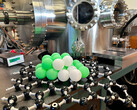When it comes to hydrogen, the matter is perfectly clear: the tiny molecules, which even escape from massive steel containers, are formed in the earth's crust but are released directly into the atmosphere. This happens everywhere and quite evenly, so direct utilization is out of the question.
However, after large natural hydrogen deposits were discovered in Mali, Oman and Germany, the existence of such concentrations of near pure H2 has been reassessed. A study just published in Science Advances comes to the conclusion that previous assumptions about the potential production of hydrogen from natural sources fall far too short of reality.
A fresh look at hydrogen storage sites
While around 500 million tons are needed annually for the global supply of H2 and the complete phase-out of fossil fuels, studies have assumed that a maximum of 20 to 50 million tons are generated and evaporate naturally each year.
On the other hand, if hydrogen accumulates in suitable underground reservoirs, as is now assumed, the global supply would most likely fall in the area of 5.6 trillion tons of hydrogen. This amount would be sufficient to get by without fossil fuels for several thousand years.
The researchers correctly assume that only a small part of this is located in places that can be reached with current drilling technology. Therefore, an estimated period of 200 years is given for which the amount of obtained H2 would last.
Further research needed
So there is plenty of time to expand renewable energy sources and, in the meantime, utilize another fuel that is essentially also a fossil fuel, but which conveniently does not produce CO2 or other unpleasant by-products.
The study also points out that this would solve the storage problem for hydrogen for the time being. After all, the versatile fuel could be extracted as required and the rest left in the appropriate geological structure.
However, one more factor still needs to be considered: the margin of error in the calculation, or estimate, is enormous: the supply is calculated as being between 1 billion and 9 trillion tons, with the highest probability being somewhere in the middle at 5.6 trillion tons. Nevertheless, even a thousandth of that has revolutionary potential.

























